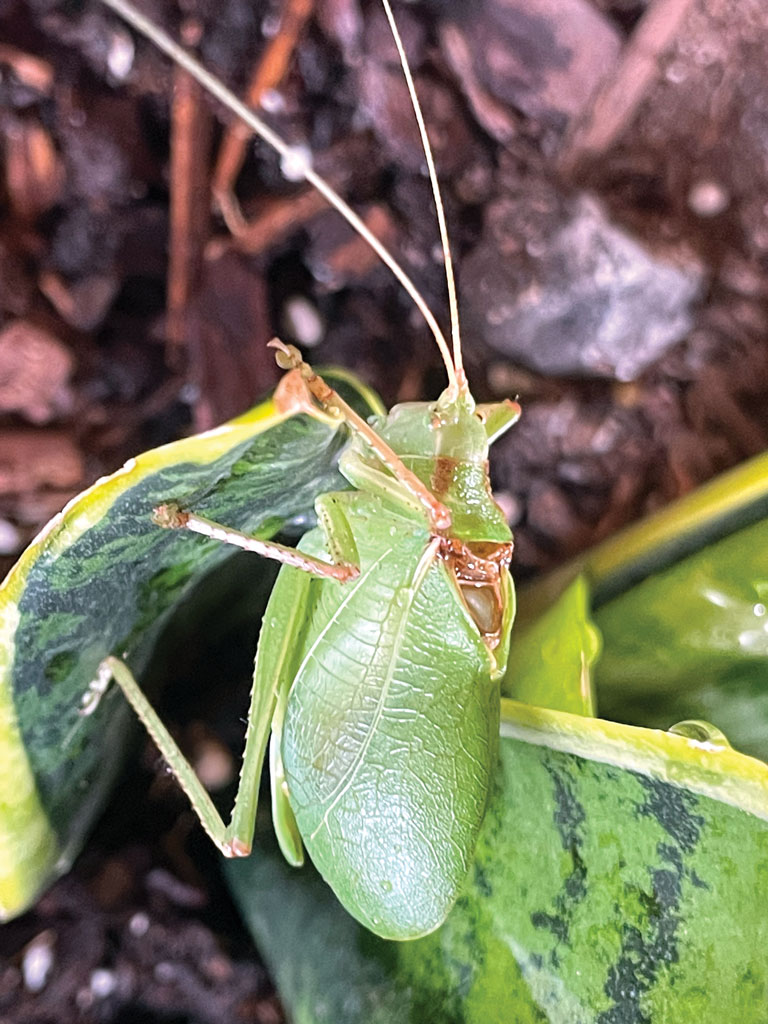Out of sight, out of mind does not apply to the Texas leaf katydid. The rarely seen and naturally camouflaged insect is known for being one of the loudest creatures on the continent with sounds capable of registering 110 decibels — comparable to a chain saw.
These nighttime serenaders also have the distinction of being the earliest known insects with ears and the first to use sounds in complex communication. The nightly chorus of “Katy-did, Katy-didn’t” is heard from spring through early fall in Central Texas and viewed by many as the soundtrack of summer.
The green, stout-bodied insect is about 1.5 inches long with a pair of wide, cupped leaf-like wings that serve several purposes, although flying isn’t one of them. When opened, the wings help the katydid appear larger and scarier to a predator. They also act as a parachute, allowing the insect to flutter down to a lower perch.
Leaf katydids are arboreal, spending the majority of their lives perched high overhead in the leafy tree canopy only to venture down to find a mate. Wings play another big role in procreation. They are the sole means of audible communication in the hunt for love.
Sound is produced when the sharp edge of one wing is scraped against the toothed-file portion of the other in a process called stridulation. At dusk, the male chorus tunes up, fueled by competition for the ladies. The wing’s cupped shape amplifies waves of sound throughout the night. Females can also produce sounds, but the evening show is primarily an all-male event.
Closely resembling the food they consume, katydids dine on leaves but pose no threat to the health of a tree, at least under normal conditions. In July 2001, several hundred acres of post oak trees on Texas 21 near Dime Box were stripped of leaves. Texas A&M Forest Service experts blamed the infestation on several years of drought conditions.
Predators that pose a threat to tree-dwelling katydids include spiders, birds, bats, lizards, and any mammal in need of a light snack. By the way, humans also eat katydids, though usually cooked. Remove the head, wings, and legs and toss them in a frying pan over a hot fire to prepare.
Here are several more interesting facts about the katydid.
- They walk very slowly and jump only when startled.
- Song tempo increases as outside temperatures warm up.
- Katydids are cold-blooded, so the songs slow down when temperatures drop.
- True katydids are the most common of the 6,500 species of katydids and have regional dialects.
- They do not bite.
- They are more closely related to crickets than grasshoppers.
- Their ears are below the “knee” on the front legs.
- Small compound eyes have a pupil effect, but they have no pupils.
- Females are differentiated by the presence of an ovipositor, an upward-curving, tail-like appendage that is used to deposit eggs.
- A nymph hatches from an egg and looks like a small adult, but without wings. They shed their exoskeletons by molting until a final molt when they become adults with wings.

